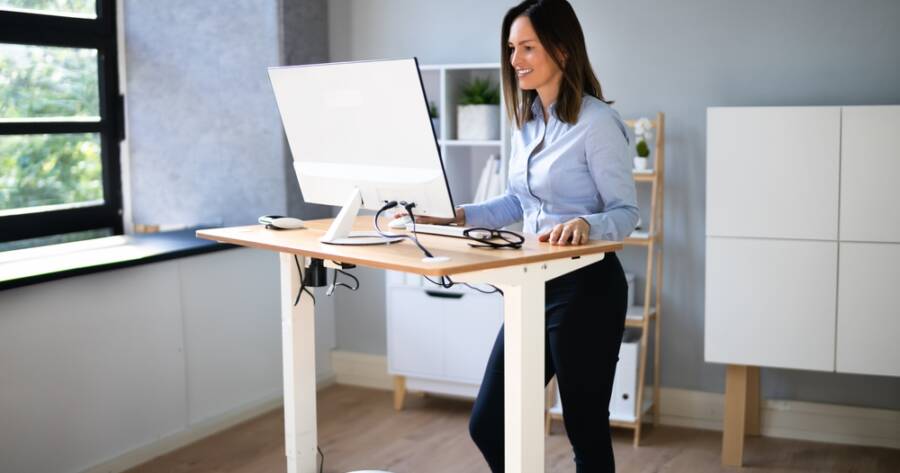Many people working at desks experience back and neck pain from sitting too long. Standing desks have become popular as a way to reduce this discomfort. By allowing users to alternate between sitting and standing, these desks may help ease strain and support better posture. Understand how standing desks can improve comfort and reduce pain during the workday.
Why Sitting for Long Periods Causes Pain
Sitting for hours at a time can put pressure on the spine and muscles. When seated improperly or too long, the natural curve of the lower back may flatten, leading to strain. Neck muscles often tense as people lean toward screens or phones. Over time, this tension can cause persistent pain and stiffness.
Slouching or poor posture adds to these problems. Without breaks or movement, muscles become tight and joints stiff. This can make it hard to sit or stand comfortably, creating a cycle of discomfort that worsens without change.
How Standing Desks Help Improve Posture
Standing desks encourage users to stand upright with weight evenly distributed. This position naturally supports the spine’s normal curves and reduces pressure on the lower back. When used correctly, standing desks can help keep the shoulders back and the neck aligned with the spine.
By switching between sitting and standing, muscles stay more active and flexible. This reduces the risk of stiffness and fatigue that comes from holding one position too long. It also encourages better movement habits throughout the day, which supports long-term spinal health.
Tips for Using a Standing Desk Effectively
Simply standing all day is not the goal. Experts recommend alternating between sitting and standing, aiming for a balance that feels comfortable. For example, starting with 15 to 30 minutes of standing each hour can help the body adjust without causing new strain.
Proper desk and screen height are important. The desk surface should allow your elbows to rest at about a 90-degree angle, and the top of the computer screen should be at eye level. This helps avoid leaning forward or looking down, which can cause neck strain.
Wearing supportive shoes and standing on a soft mat can reduce fatigue. Moving around, stretching, or walking briefly during breaks also supports muscle health and prevents soreness.
Additional Benefits Beyond Pain Relief
Using a standing desk can also improve energy and focus. Many people report feeling more alert and less tired when they don’t sit for long stretches. Standing encourages better circulation, which may support overall health.
Standing desks may also help with weight management. Standing burns more calories than sitting, which adds up over time. Though it’s not a replacement for exercise, it can be part of a more active daily routine.
Finding the Right Fit for You
Not every standing desk suits every person or workspace. Adjustable desks that switch between sitting and standing modes offer the most flexibility. For smaller spaces, compact models or desk converters can fit on existing tables.
It’s important to listen to your body and adjust habits as needed. Some people may find standing for too long causes discomfort in the legs or feet. Taking breaks and gradually increasing standing time can make the transition easier.
Consulting with a healthcare professional or ergonomic specialist can also help tailor your setup to your needs. They can recommend specific adjustments to desk height, chair support, and posture techniques.
Standing Up to Discomfort
Standing desks offer a promising way to reduce back and neck strain caused by prolonged sitting. By promoting better posture and encouraging movement, they support spinal health and comfort during the workday. When used thoughtfully and combined with good habits, standing desks may help you stand up to discomfort and enjoy a healthier workspace.
